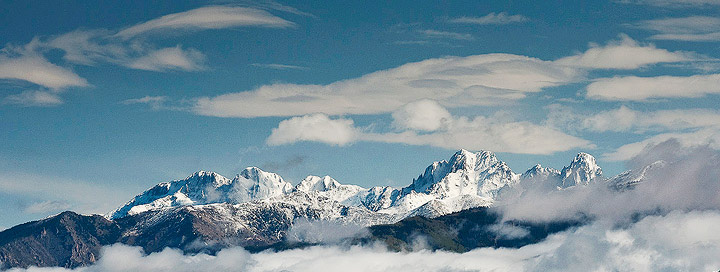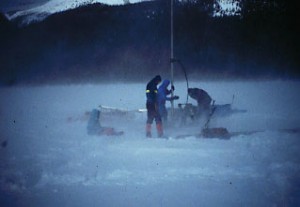Publications:
(* denotes Colorado College student co-author)
-
Leonard, E.M. and Reasoner, M.A., 1999, A continuous Holocene record inferred from proglacial lake sediments in Banff National Park, Alberta, Canada. Quaternary Research 51, 1-13.
-
Leonard, E.M., 1997, The relationship between glacial activity and sediment production: evidence from a 4450-year varve record of Neoglacial sedimentation in Hector Lake, Alberta, Canada: Journal of Paleolimnology 17, 319-330.
-
Leonard, E.M., 1995, A varve-based calibration of the Bridge River tephra fall: Canadian Journal of Earth Sciences 32, 2098-2102.
-
Leonard, E.M., 1990, An assessment of sediment loss and distortion at the top of short gravity cores: Sedimentary Geology 66, 57-63.
-
Leonard, E.M., 1986, Use of lacustrine sedimentary sequences as indicators of Holocene glacial history, Banff National Park, Alberta, Canada: Quaternary Researrch 26, 218-231.
-
Leonard, E.M., 1986, Varve studies at Hector Lake, Alberta, Canada, and the relationship between glacial activity and sedimentation: Quaternary Research 25, 199-214.
-
Leonard, E.M., 1985, Glaciological and climatic controls on lake sedimentation, Canadian Rocky Mountains: Zeitschrift für Gletscherkunde and Glazialgeologie 21, 35-42.
|
Abstracts:
-
Leonard, E.M., 1998, Is the type-Crowfoot Moraine, Alberta, really a Younger Dryas equivalent? Geological Society of America Abstracts with Programs, 30, 66.
-
*Dehn, G.A., Reasoner, M.A., and Leonard, E.M., 1998, Late Quaternary vegetation and climatic change in the Canadian Rocky Mountain Region: Evidence from the Dianna Lake pollen record. Geological Society of America Abstracts with Programs, 30, 284.
-
Leonard, E.M. and Reasoner, M.A., 1996, Altithermal of the Canadian Rockies – timing and internal structure: evidence from lake sediments: American Quaternary Association Program and Abstracts,14th biennial meeting, 173.
-
Leonard, E.M., 1995, Use of glaciolacustrine sediment records in reconstructing high-altitude glacial history and climatic change in the Canadian Rocky Mountains: Abstracts of Workshop on Climatic Change at High Altitude Sites, Wengen, Switzerland, 38.
-
Leonard, E.M. and Reasoner, M.A., 1995, High-resolution record of Neoglacial sedimentation in a 5000 year varved core from Hector Lake, Alberta: Canadian Quaternary Association Abstracts.
-
Leonard, E.M., 1987, New evidence on early to mid Holocene environmental changes and glacial activity, central Canadian Rocky Mountains: Programme with Abstracts, International Union for Quaternary Research, XIIth International Congress, 209.
-
Leonard, E.M., 1984, Glaciological and climatic controls on lake sedimentation, Canadian Rocky Mountains: Symposium on Climate and Paleoclimate of Lakes, Rivers, and Glaciers, Innsbruck, Austria, 11.
-
Leonard, E.M., 1982, Controls on sediment yield in a glacial environment: Geological Society of America Abstract with Programs 14, 545.
-
Leonard, E.M., 1982, Holocene glacial history, Central Canadian Rocky Mountains: evidence from lacustrine sedimentary records: American Quaternary Association Abstracts and Program, 7th biennial meeting, 120.
-
Leonard, E.M., 1980, Late Holocene glacial activity and sediment yield, Banff National Park, Alberta: American Quaternary Association Abstracts and Program, 6th biennial meeting, 127.
|

